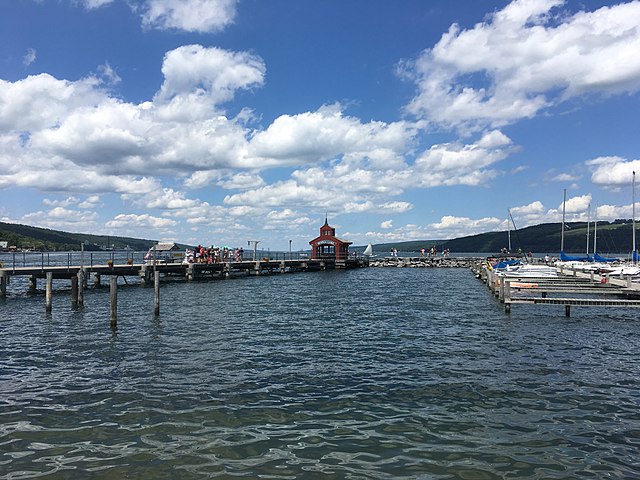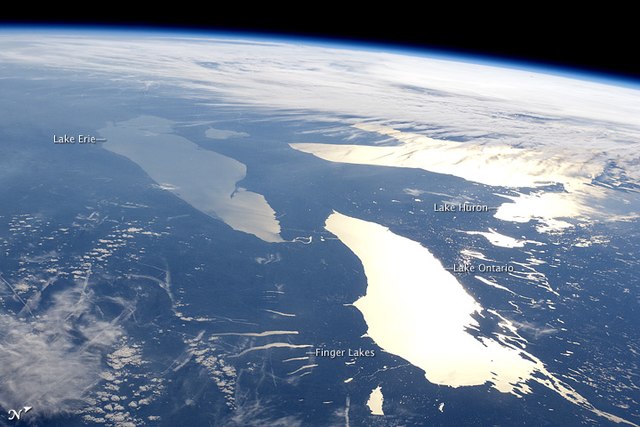Seneca Lake is the largest of the glacial Finger Lakes of the U.S. state of New York, and the deepest glacial lake entirely within the state. It is promoted as the lake trout capital of the world, and is host of the National Lake Trout Derby. Because of its depth and relative ease of access, the US Navy uses Seneca Lake to perform test and evaluation of equipment ranging from single element transducers to complex sonar arrays and systems.
The lake takes its name from the Seneca nation of Native Americans. At the north end of Seneca Lake is the city of Geneva, New York, home of Hobart and William Smith Colleges and the New York State Agricultural Experiment Station, a division of Cornell University. At the south end of the lake is the village of Watkins Glen, New York, famed for auto racing and waterfalls.
Aerial view from the southern part of Seneca Lake.
Seneca Lake from Watkins Glen
Looking south on Seneca Lake in the city of Geneva, New York
Seneca Harbor wine center
The Finger Lakes are a group of eleven long, narrow, roughly north–south lakes located directly south of Lake Ontario in an area called the Finger Lakes region in New York, in the United States. This region straddles the northern and transitional edge of the Northern Allegheny Plateau, known as the Finger Lakes Uplands and Gorges ecoregion, and the Ontario Lowlands ecoregion of the Great Lakes Lowlands.
Satellite view of the Finger Lakes region in late fall. Lake Ontario at the top left.
The Finger Lakes are in the center bottom of this west facing image; Lake Erie (upper left), Lake Huron (upper right), and Lake Ontario (lower right) are three of the Great Lakes
Seneca Lake, from South Main Street in Geneva, New York.
Bluff Point on Keuka Lake








